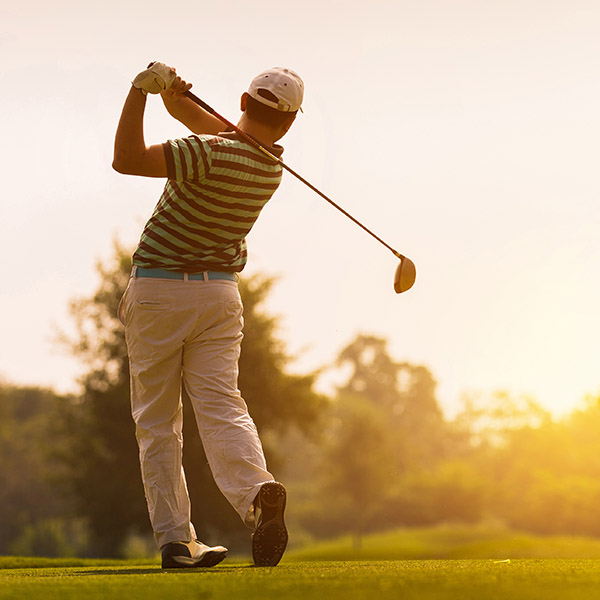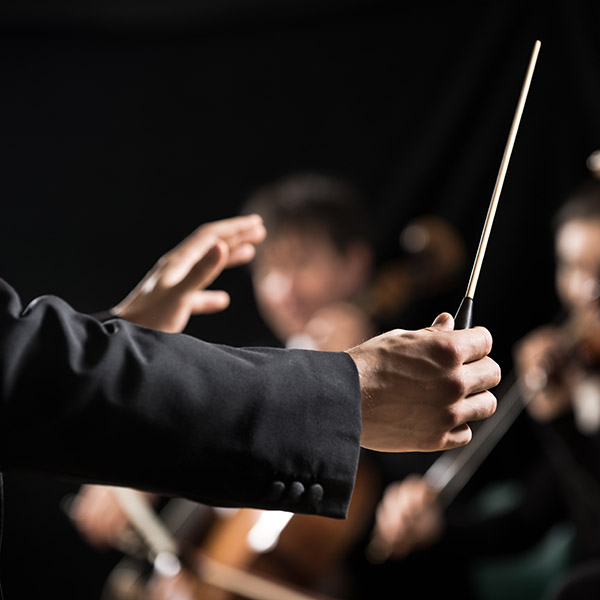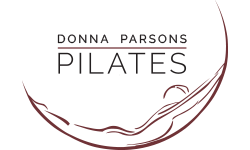Principles
The practice of Pilates is a skill, which can be defined as a developed or acquired ability that requires practice and commitment over time. Pilates is the fine tuning of human potential at a high level. In order to realize the true benefits of Pilates, it is necessary to know the specific rules of engagement, which are very different from our common experience of physical training. For this reason, Pilates requires a higher level of awareness in order to transcend the habitual patterns our bodies have acquired over time. Along with the foundational physical rules of stabilization and movement, I base my training on the following guiding principles.

PROPRIOCEPTION
Proprioception, defined as the body’s ability to sense movement, action and location is an important skill we rely on in Pilates to bring what were previously unconscious patterns of movement into our conscious awareness in order to build stronger, more secure foundations for physical potential.
Pilates gives us the opportunity to bring how we perceive movement into our conscious awareness in order to change habitual patterns that are dysfunctional and replace them with better options.
There are complex subconscious systems in the human body that allow us to move around without falling over or bumping into things. We have all kinds of mechanisms that give us feedback from our innate sense of uprightness and balance. It includes conscious and subconscious perception of joint position and alignment, along with muscle force and effort. Signals from sensory receptors in the skin, muscles and joints combine with central nervous system signals related to motor output that allow us to move our bodies without having to contemplate every move.
Think about it…all we have is the very small surface area on the bottoms of our feet that actually contact the earth. Our entire body is contained in those small pads touching the ground as we stand, walk, run or move in all directions. The rest is just the air around us. The amazing capability of the human body allows us to do all of this without having to think too much about any of it. But this is also the downside. Our bodies are constantly making decisions without our knowledge. And over time, these small, in-the -moment decisions add up to larger problems when we don’t want to acknowledge the imbalances and misalignments that are occurring. We just don’t want to know. Why is that? In my opinion, both from my perspective as someone who owns a body and the teacher in me who has worked with many bodies, it boils down to too much information. We are overloaded as it is. Do we really have the headspace to open the door to what’s really happening? What if we see something we don’t like or can’t handle? It’s shocking and much easier to just turn away. When we refuse to face the reality of how our bodies do most everything without our permission, the only direction is down. Gravity (and cell phones) will rule our bodies.
We cling to what we have already created and are unwilling to give it up in order to create something better in the future. (I’m talking to all of you in the gym lifting too much weight with bad form… you will blow out your shoulders eventually) It’s challenging to face the reality that what we don’t know about our bodies has the potential to compromise our health, longevity, endurance and professional sports careers. But the other side of the coin says that what we have was not built by us. Our bodies have a very unconscious existence and are a partial product of the many external factors in life, including environment, childhood, daily habits, nutrition, sleep, stress, competition…the list goes on. Some of these factors are in the past, but most of them are present in our daily lives. Our proprioception skills can become sharper and more attuned at any age to consciously feel our bodies in space, in order to receive quality feedback from our environment. This will help create the wisdom to make the appropriate changes.

STABILIZATION
Pilates training focuses first and foremost on stabilization. Physical stabilization is the ability of muscles to contract isometrically to control joints for the prevention of excessive motion. Proper training promotes effective stabilization for movement, which results in our ability to turn force into power. We can then stay in proper alignment for joint function and decrease the potential for injury. In Pilates, we focus on what is not moving in order to create a deeper connection to potential strength and power we didn’t know existed.
What do we actually want from our bodies? Strength, endurance, longevity, grace, flexibility, control, alignment…the list goes on. All of these things depend on one thing, and one thing alone. Stability. Without stabilization, we have no foundation on which to build anything on that list. When optimum physical potential is the goal, stability must be the primary focus. We have no way of focusing the force we are generating from our muscles if there is excess movement in the parts of our bodies that create the container for power.
How do we switch from our innate tendency to produce random force to the organized vessels of controlled power we are meant to be? The answer lies in becoming aware of the reflex action of our bodies to move without stabilizing first. In Pilates training, we focus on conscious stabilization before every movement.
We have smaller muscles in our bodies that are built to stabilize. That means they contract to hold tensional integrity without the responsibility of moving the bone they are attached to. They are meant to hold the joint or area of the body in the proper position for optimal generation of power and control. They create the closed chamber with only one way out when the explosion happens. The problem is they don’t function unless you tell them to. How can we tell them to do their job if we don’t know they exist, what they feel like and where to find them?
We have big muscle groups that are good at moving the body. They’re not only good, they’re fiercely competitive. They will shove everyone out of the way to be first in line. We know exactly where these muscles live. They are loud, bossy and dominant. They don’t respond well to taking a back seat. We find them mostly in the front of the body where they take over reflexively to move us forward. We all see where this is going. The big muscles are the first to fire and the smaller ones are hiding in the corner. The big movers know how to get us where we want to go but they have very little fine tuned control. They can explode out of the gate but then turn off immediately. The smaller stabilizers are tough, reliable and accurate. They will have our backs if we invite them to play the long game, the one where control, reliability and endurance are imperative. Bottom line…we have to shut the big movers up for a minute and give the stabilizers the spotlight. In Pilates training, stabilization is first, last and everything in between.

MUSCULAR BALANCE
Because we are vertical structures in a horizontal world, the concept of muscular balance keeps us upright. Pilates promotes optimum balance between the larger muscle groups that move our bodies and the smaller muscles that support the structure. Our muscles get out of balance when one group is allowed to dominate and others become weak and inefficient. By engaging muscles that have not been previously allowed to participate we create more potential for proper alignment, strength and power while decreasing the chance of injury.
We have to instruct our own bodies on how to be in balance. We have to be wise and proactive in how we operate our physical bodies. If we allow them to operate themselves, the autonomic nervous system makes all the decisions in darkness. Our strong movers take over, smaller stabilizers take breaks and no one wins. This creates muscular imbalances that pull joints out of alignment. When joints are out of alignment, connective tissue gets overstretched, bones don’t stack up in gravity and pain will eventually get our attention. This all happens because of habitual movement patterns that are ingrained early in life. If our bodies are untrained, they will create their own way of moving. This applies to basic walking as well as how we open doors, lift boxes and do a heavy weight workout. Running, cycling and swimming are full body activities that we are all familiar with yet we can be sure that our bodies will choose the path of least resistance to get the job done without input from our conscious mind. The body is ultimately invested in survival as its bottom line decision maker. It will choose the muscle group that is probably the biggest, first in line and readily accessible. Quads, anyone?
Our muscles are in better balance with each other when we encourage our bigger muscles to do what they do best instead of getting into someone else’s business. When we include the smaller supporting muscles we can increase our ability to turn random force into focused power.
The primary example is the hip structure. Generating power from the legs starts with the stabilization of the pelvis from the transversus abdominis. Also from the ability of the external rotators to keep the femur bone in proper alignment, the freedom of the head of the femur in the acetabulum, all the muscles around the hip that contribute to balanced output in all directions (honestly, squats aren’t going to do it for you). Everyone is doing their own job.
Pilates training is designed to uncover and change those patterns over time by slowing our big movers down and adding the stabilizers and other absent muscle groups that somehow got switched off when they weren’t being used. Along with lack of use, previous injuries can shut down specific muscles as a protection for the body. Most of the time we have no idea what we are missing. It takes conscious awareness of their absence and intentional re-engagement to turn them back on again. Using the mat work and pilates equipment to load the body in all planes of movement gives us an opportunity to dig deeper into unconsciously ingrained dysfunctional patterns of muscular engagement that would otherwise be lost.

ALIGNMENT
The proper alignment of our bones and muscles can affect all systems of the body, resulting in increased health and well being benefits. No exercise modality will do this for us. It is up to us. Pilates gives us an opportunity to be responsible for how we choose to hold our bodies in space. Proper postural alignment is a choice. We are the only ones who hold our bodies up and ultimately make it function optimally.
I have been known to go on and on about gravity. We forget it exists. I tell people to refresh their memories and go look at any large body of water. The horizon line is razor sharp. It is the place where we can actually ‘see’ the effects of gravity over a long distance holding down the massive weight of the water onto the earth with no deviation. Gravity does not get tired. It does not forget what its job is or ask for a day off. It is the manifestation of ultimate endurance.
We, as humans, are vertical structures in a horizontal world. We stand upright on two sticks that feed into one central flexible stick with a large ball on top. All the while resisting the gravitational pull down to the earth with almost no conscious awareness of how that is being accomplished.
All of the places where our bones come together in our bodies have very small tolerances, meaning that there is a narrow range where those two bones function in harmony with each other without excess wear. The two bones are knit together by tendons, ligaments and muscles and they are fed by the circulatory system of the blood and other fluids. They are given instructions by a network of nerves connected to our brains.
So we are a bag of bones with a flexible stick up the center and a bowling ball on top. Something has to hold this bag up. Someone has to recognize that gravity exists and it’s not going away. Alignment means the conscious effort to put everything in its proper place in relation to the horizontal pull of gravity as we desire to be vertical against the constant pull downward. We all know what happens to the tires of our car when they are not aligned. The same thing happens in the body, on all levels and planes of motion, resulting in all sorts of unwelcome outcomes, with artificial joint replacement at the top of the list.
Creating and holding proper alignment in our bodies is far more important than creating strength. Simply because we cannot create true strength unless our muscles are balanced and our bones are lined up to interact with the pull of gravity in the most efficient way possible. Without alignment, all perceived strength goes out the window. We have the ability to train our bodies to hold proper alignment consciously and then over time, subconsciously. Yes, it’s hard. Until you practice it enough. Until it’s just there.
So the next time you feel like it’s too much work to hold your body in proper alignment as you do your day, just remember that gravity never gives up and it’s not going to lose this game. If we take the challenge and do the work, we’re not going to lose either.

FEEDBACK LOOPS
A feedback Loop is defined as the process of feeding a system’s output back into itself to influence its future output. If we know where to look and what to feel, we can direct our minds to change future output. The only way we can change dysfunctional patterns that are inhibiting our potential is by finding them, identifying the source, consciously feeling them and doing something different. It’s not complicated and it’s not easy. What makes it seem so difficult is that those patterns are so ingrained in our movements that we are oblivious to their existence.
Built into every Pilates exercise is a feedback loop. Exactly what does that mean? And how is it used in the context of Pilates training?
My purpose as a teacher is to be a technical guide. I ask a lot of questions. I see patterns that bodies have formed over time that are not going in the right direction. It doesn’t matter if we’re 18 or 80. We can change. Depending on how long we let our bodies get away with wandering off the main road, change is relative but nonetheless powerful. Something is always better than nothing and the sooner we discover these possibilities, the better. As humans, we have all developed an unconscious strategy for our own unique body to exist and move in the world. Sooner or later, we have to consciously become aware of the aspects of this strategy that no longer serve us.
As we move through an exercise, every surface that touches our bodies has useful information for us. This is our feedback loop. When we feel one hip heavier than the other in a sitting position, we can make a change. If one leg is stronger than the other, we should know this. Inherent in the Pilates repertoire are exercises and equipment that will bring imbalances to our conscious awareness. It’s going to feel weird at first. Stay conscious and curious. Information is power.
The Pilates reformer creates the perfect situation to detect and address imbalances. The surface area of the carriage is the platform that supports our bodies in all positions; prone, supine, side lying, sitting, standing and is constantly offering feedback. The pulley system with the straps on the hands or feet give us valuable information if we are willing to receive it. The goal is to bring the body into balance with itself by asking for information so we can work with it. We are not allowing our strengths to take center stage. By acknowledging our weaknesses we can become balanced and stable by paying attention to the feedback we are always receiving. Once we know that the goal of Pilates is to create a deep centered awareness of how we move and why, we can find the feedback loops that lead to balance, real strength and endurance.

BREATH WORK
The overall effectiveness of the Pilates exercises and movement patterns are dependent on the way we use our breath to engage our bodies at a deeper level.
We coordinate specific breath patterns to every movement pattern in the Pilates repertoire. Attention to the breath helps us to achieve the optimum oxygen level for our bodies to function efficiently. We also use the breath for muscular stabilization. And just as important, we use the breath for establishing the appropriate rhythm for movement, to open up more lung capacity and to create stronger abdominals from the inside. The breath calms our nervous system, keeps our minds focused on the present moment and gives our skin a wonderful healthy glow. What’s not to like?
Joseph Pilates was asthmatic as a child and consequently built his entire life’s work on the element of correct breathing. This important element has been diminished, downplayed and neglected in the current Pilates training. We have a responsibility to coordinate an appropriate breath pattern with each movement if we want to call what we are doing Pilates. At the root of these breathing patterns lies the magic of the work. Correct breathing takes us deep into the core of our bodies where real change can occur.
Along with the benefits of increased lung capacity and regulating the nervous system, Pilates breath work has a clear and precise physical purpose:
When we exhale we can engage and brace our abdominal system more effectively.
When we inhale, we keep our abdominal engagement and increase our lung capacity.
When we exhale, we can more effectively flex our spines.
When we inhale, we can more effectively extend our spines.
Putting these concepts together will help us to understand the basic reasons why the breathing patterns are so important and effective. When we need extra stabilization or the movement involves spinal flexion, we can use the exhale. When a movement is not as demanding or we are in spinal extension, the inhale can be more useful. This is the first step to understanding and creating the deeper connection that will lay the foundation for everything else. There is a breathing pattern for every Pilates exercise that requires our attention throughout the exercise. It’s difficult at first to learn the skill of coordinating movement and breath yet, if taken seriously, it has the potential to turn our bodies around in the right direction by using breath as a driver of the movement.
When we combine a specific movement pattern with a specific breath pattern, we are engaging our full attention into our bodies and minds. The full Pilates repertoire is meant to be practiced as a system, with levels of difficulty that need to be taught correctly in order to move to the next level. Correct breathing enables us to engage in more difficult and complex movements at the higher levels of training. Correct breathing will inform our brains of what our bodies are choosing.
If we want Pilates to be worth all the time and precious resources we devote to its practice, attention to correct breathing will ensure that your efforts will walk out the door with you and inform your everyday life in a profound way.

